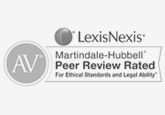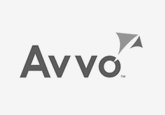The Prevalence and Impact of Social Media Fraud in the United States
Introduction
In recent years, the proliferation of social media platforms has revolutionized the way individuals interact, share information, and conduct business. However, this rapid expansion has also provided fertile ground for a growing and concerning phenomenon: social media fraud. The United States, with its high rate of social media usage, has not been immune to this issue. This essay explores the nature, prevalence, and impact of social media fraud in the United States, and outlines measures that can be taken to mitigate this growing threat.
Nature of Social Media Fraud
Social media fraud encompasses a wide range of deceptive practices conducted via platforms such as Facebook, Instagram, Twitter, and LinkedIn. Common forms of fraud include identity theft, phishing schemes, fake investment opportunities, and counterfeit goods sales. Fraudsters exploit the anonymity and broad reach of social media to perpetrate these schemes, often targeting unsuspecting individuals and businesses.
Prevalence of Social Media Fraud in the U.S.
The extent of social media fraud in the United States is significant and growing. According to the Federal Trade Commission (FTC), reports of social media fraud have surged in recent years, with thousands of Americans falling victim to various schemes. The FTCs Consumer Sentinel Network Data Book reported that in 2020, social media was the most common contact method for fraud, accounting for over $117 million in reported losses.
Impact on Individuals and Businesses
The ramifications of social media fraud are profound, affecting both individuals and businesses. For individuals, the consequences can include financial loss, emotional distress, and damage to personal reputations. Victims of identity theft, for example, may face prolonged challenges in restoring their credit and personal information.
Businesses are not immune to these threats. Companies can suffer significant financial losses due to fraudulent transactions, and their reputations can be severely damaged by association with counterfeit goods or scams. Additionally, businesses may incur substantial costs in implementing security measures to protect against fraud.
Mitigation Strategies
Addressing social media fraud requires a multifaceted approach involving individuals, businesses, and regulatory bodies.
1. Education and Awareness: Raising awareness about the various forms of social media fraud and educating the public on how to recognize and avoid scams is crucial. This can be achieved through public service announcements, social media campaigns, and educational programs.
2. Robust Security Measures: Social media platforms must invest in advanced security technologies to detect and prevent fraudulent activities. This includes the use of artificial intelligence and machine learning to identify suspicious behavior patterns.
3. Regulatory Oversight: Government agencies such as the FTC should continue to monitor and regulate social media platforms, ensuring that they comply with stringent security and privacy standards. Penalties for non-compliance should be enforced to hold platforms accountable.
4. Collaboration: Collaboration between social media companies, financial institutions, and law enforcement agencies is essential to effectively combat social media fraud. Information sharing and joint initiatives can enhance the ability to track and apprehend fraudsters.
Conclusion
Social media fraud is a pervasive issue that poses significant risks to individuals and businesses in the United States. While the rapid growth of social media presents opportunities for innovation and connectivity, it also necessitates vigilance and proactive measures to protect against fraudulent activities. By fostering education, implementing robust security measures, enforcing regulatory oversight, and promoting collaboration, stakeholders can work together to mitigate the impact of social media fraud and ensure a safer online environment for all.





